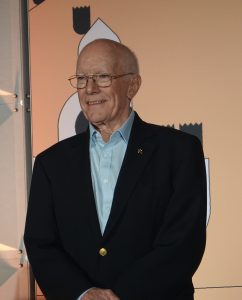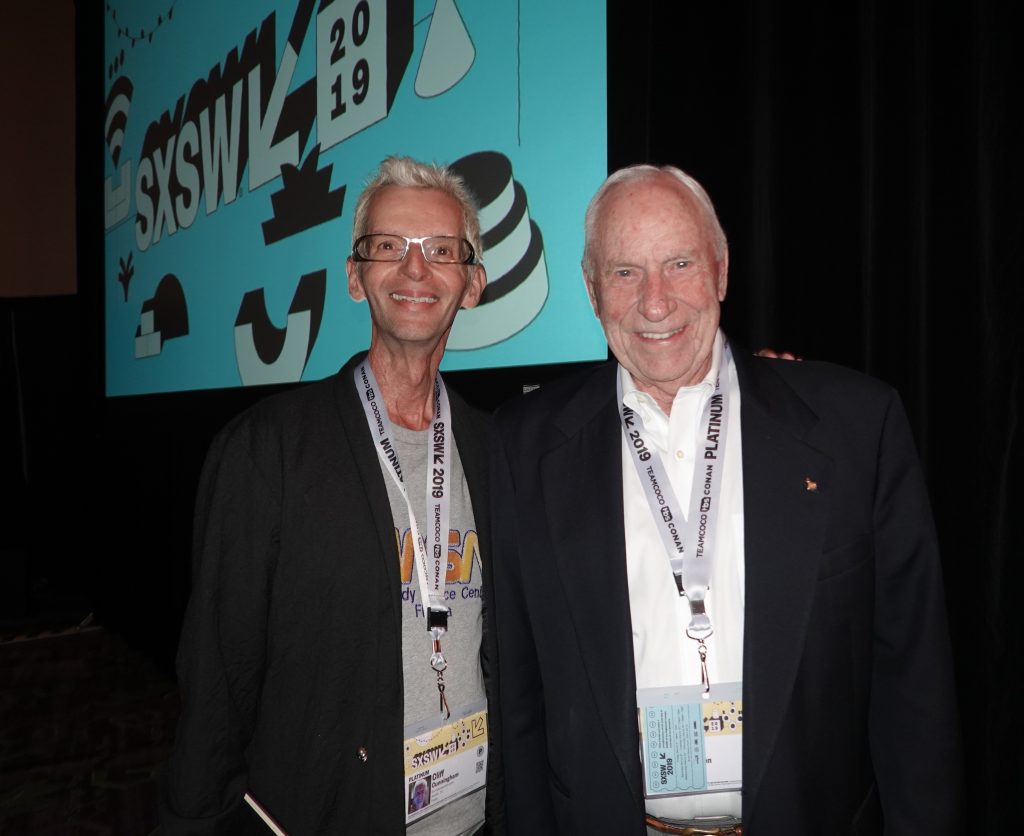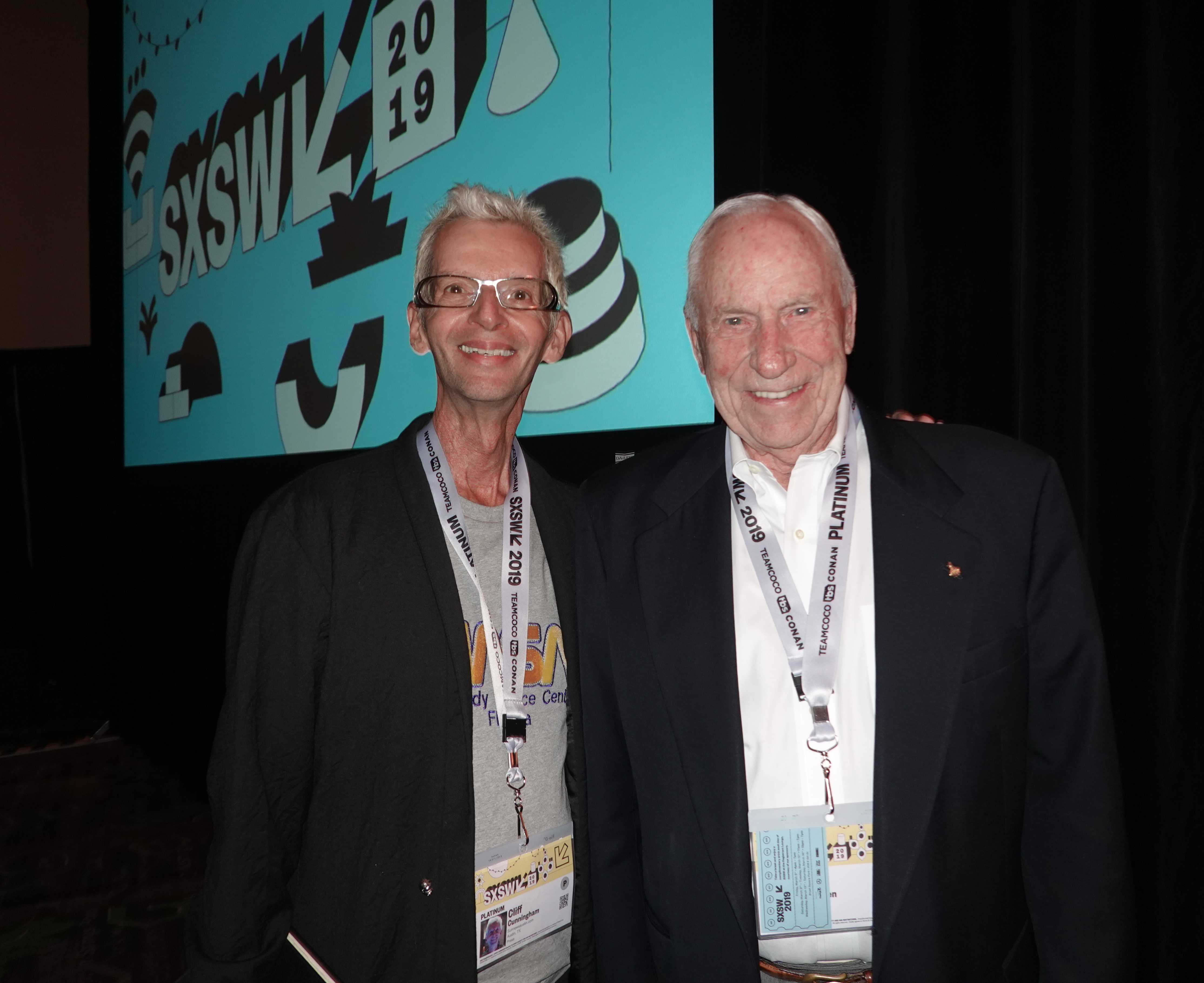In anticipation of the 50th anniversary of the Apollo 11 Moon landing in July, two major players from the Apollo days of the 1960s and 70s appeared in Austin at SXSW to reflect on the Apollo program that sent 6 six missions and 12 people to the lunar surface.
“We were explorers: our role models were Lewis and Clark,” said Al Worden, who flew on Apollo 15. He encapsulated what the flight was like by using an old flight pilot’s expression. “Hours of boredom followed by moments of terror.”
While his crewmates Scott and Irwin visited the lunar surface, Worden stayed aboard the Command module in lunar orbit. While in orbit “a camera designed to be used in the U2 spyplane program” was taking pictures of the Moon. “My job was to get those film canisters. I went out the hatch, but afterwards we realised only one picture of me came out. It was me going out the hatch- not my best side! The view I had outside was extremely dramatic: I could see the Earth and Moon at the same time.” Of his time in lunar orbit when the others were on the surface, Worden explained “I was alone but never lonely.”

He was joined in the panel at SXSW by Gerry Griffin, flight director (FD) for the Apollo missions. He described his boss and how he became an FD.
“Many of us in Mission Control had fighter pilot backgrounds. We had a single czar: Chris Craft. The guys in Mission Control loved being out on the edge of a diving board, making a decision. Craft had the ability to push those people. He picked the flight directors.”
Griffin said he was a “guidance and navigation guy for Gemini,” the 2-man space program that preceded Apollo. After the fire that killed three astronauts on Apollo 1 in a ground test, “Craft decided he needed three more FDs- he picked me. I was 33. It was a hoot to be a flight director. It was fun, and it was in our DNA to do that. It was the best job I ever had.”
The mindset in Mission Control those days was clear. “It was a space race,” said Griffin. “We didn’t talk about it every day but we knew it was there. We got John Kennedy’s job done in the decade- just barely!”

